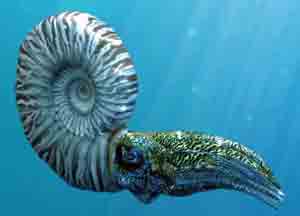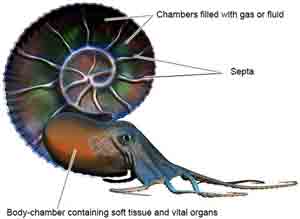Description
Origin : Madagascar Southwestern (Tulear)
Geological era : Late Jurassic (Oxfordian)
Age : 160 million of years
Size : 40 gr - cm 5 x 4.3 x 1.5 h
Ammonite Fossil Seashell mm 50 x 43 x 15 gr 40 Perisphinctes plicatilis Extinct Prehistoric Cephalopod Molluscs Mesozoic Jurassic Collecting Paleontology Museum.
Also available in lots, at this link.
Very pleasant fossil specimen of Ammonite from the Upper Jurassic of Madagascar, representative collectible find of excellent quality, with clear anterior and posterior details of the numerous angular ornamental ribs, well preserved.
No restored at all. Only a piece, as in photos.
Perisphinctes is an extinct Cephalopod Mollusc belonging to the Ammonites, family Perisphinctidae. It lived in the Upper Jurassic (172-149 million years ago), and its fossil remains are found on all continents.
 The shell appearance of this ammonite is quite conventional: planispiral (wrapped in a flat spiral), symmetrical, serpenticone (shaped like a coiled snake, with little covering of the whorls).
The shell appearance of this ammonite is quite conventional: planispiral (wrapped in a flat spiral), symmetrical, serpenticone (shaped like a coiled snake, with little covering of the whorls).
At each stage of growth, the shell has a sub-square section with rounded edges; the navel is very wide but not deep. The ornamentation is made up of numerous angular and slightly proverted ribs (arched forward, i.e. in the direction of the opening). Near the belly, the ribs bifurcate, crossing the ventral region without interruption (there are no keels or ventral grooves). In some species, in the mature stage (and in general in the macroconchae) the ornamentation is simplified and the ribs can become sparser, simpler and rounded. In the juvenile forms, however, irregular constrictions (bottlenecks) are present along the spiral of the shell. The suture line (i.e. the line of insertion of the septa on the wall of the shell) is of the ammonite type, rather complex, with few but very jagged elements. The diameter of the shell of the adult forms is on average around 7 centimeters (it can vary depending on the species), although specimens measuring up to over 20 centimeters are found.
Some of the best-known species are Perisphinctes plicatilis and Perisphinctes (Prososphinctes) virguloides, both from the Upper Jurassic (Oxfordian-Kimmeridgian) of Madagascar.
The Ammonites are an extinct group of Cephalopods, which appeared in the Lower Devonian about 400 million years ago and extinguished at the end of the Cretaceous, together with the Dinosaurs (65 million years ago), leaving no known descendants.  Like all cephalopods known this organisms were carnivorous: active predators of marine animals, microphagous (plankton), scavengers, and even cannibals. The shell of ammonites in general has the form of a spiral wound on a plan (although some species, such heteromorphy, have a more complex three-dimensional winding) and it is this feature that has given their name. The appearance infact resembles a coiled horn, like that of a ram (the Egyptian god Amon was commonly depicted as a man with ram's horns). Pliny the Elder described the fossils of these animals ammonis cornua, "horns of Ammon." Often the name of the species of Ammonites ends with -ceras, from a greek word (κÎρας) whose meaning is, in fact, "horn" (eg. Pleuroceras etymologically means horn with the coast).
Like all cephalopods known this organisms were carnivorous: active predators of marine animals, microphagous (plankton), scavengers, and even cannibals. The shell of ammonites in general has the form of a spiral wound on a plan (although some species, such heteromorphy, have a more complex three-dimensional winding) and it is this feature that has given their name. The appearance infact resembles a coiled horn, like that of a ram (the Egyptian god Amon was commonly depicted as a man with ram's horns). Pliny the Elder described the fossils of these animals ammonis cornua, "horns of Ammon." Often the name of the species of Ammonites ends with -ceras, from a greek word (κÎρας) whose meaning is, in fact, "horn" (eg. Pleuroceras etymologically means horn with the coast).
The shell was divided by septa into several rooms, including the clam occupied only the last. The others were used as "air chambers" filled with gas and liquid to control the floating body. The ammonite could well change its depth in a manner similar to the current Nautilus.
Because of their extraordinary variability and distribution in marine sediments around the world the ammonites are considered fossils for excellence and guide-fossils of exceptional value, used for dating in stratigraphy of the sedimentary rocks.
The classification of ammonites is made on the basis of morphology and ornamentation of the shell, and the shape of septa, depending on the suture line.


